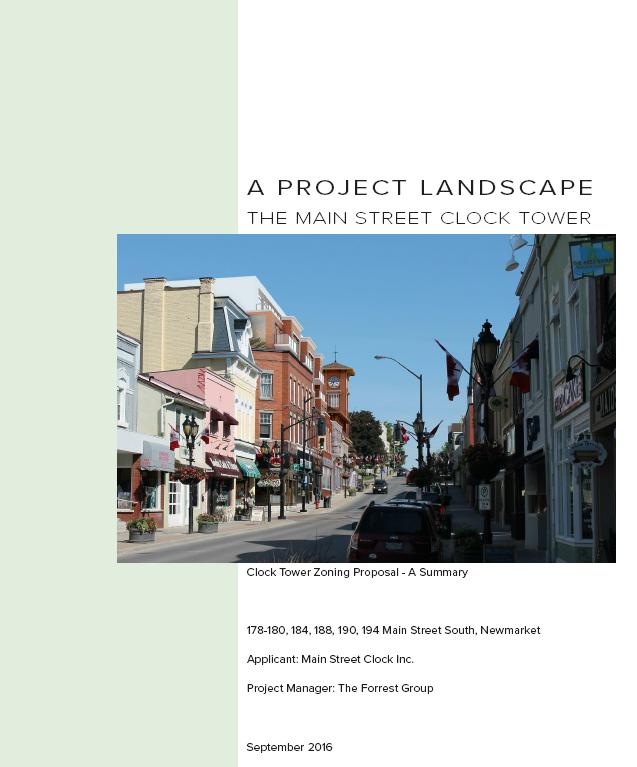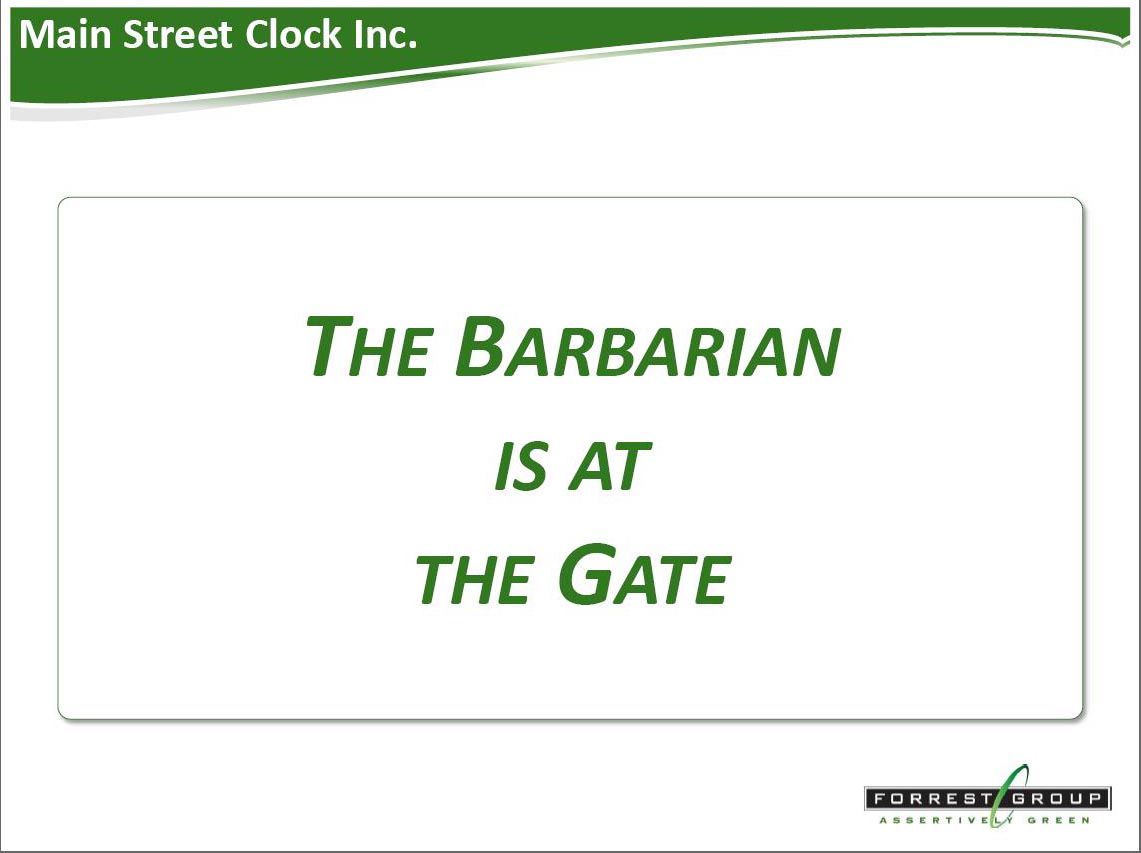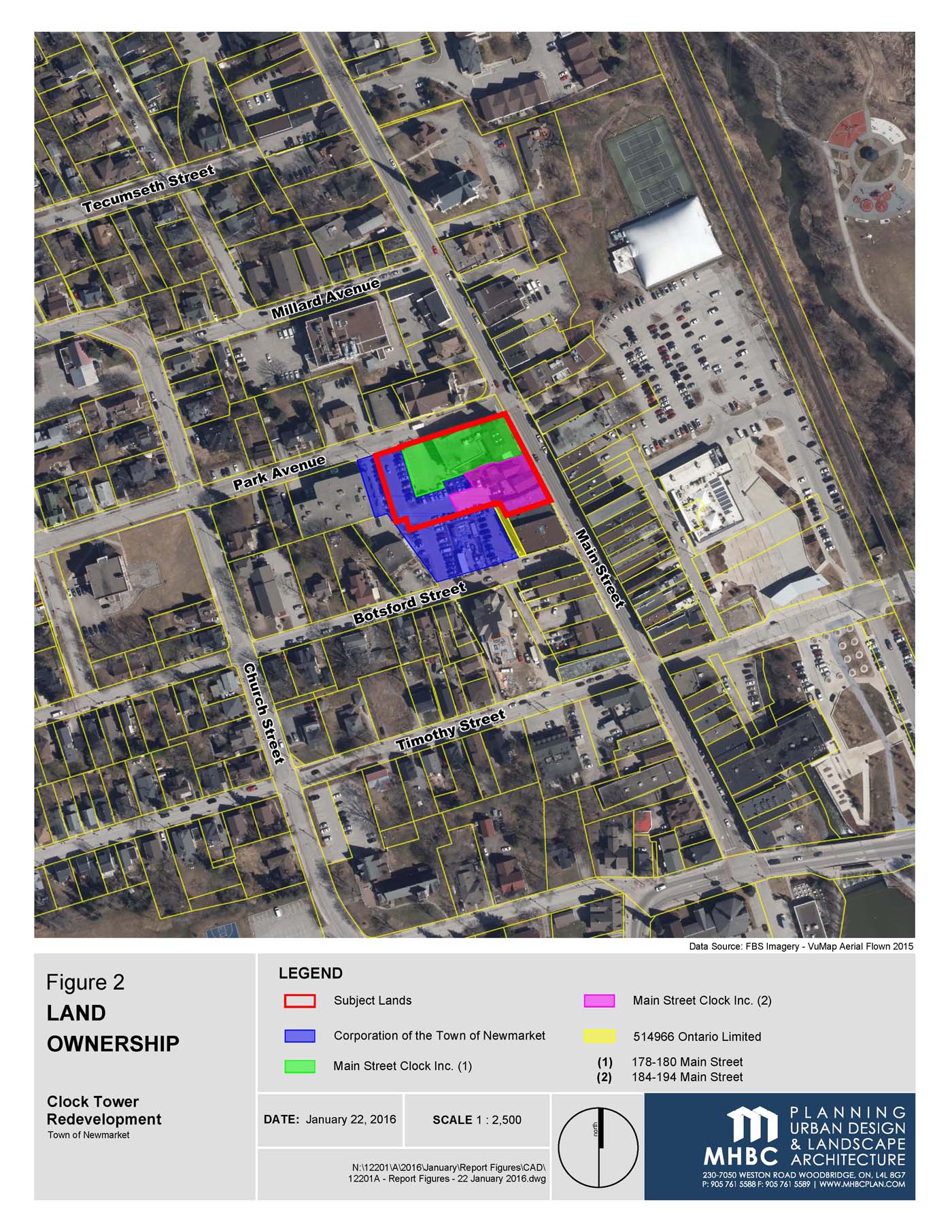Bob sends a confidential briefing on the Clock Tower to the Mayor, councillors and to the seven candidates running for office in the Ward 5 by-election. 
Woo Hoo!
You can read the document here. (Scroll to the bottom of page two and open.) There is a public interest in full disclosure.
Throughout the document Bob is economical with the actualité.
Important facts about the history of his planning proposal don’t rate a mention. For example, there is no reference to the views of the Town’s own Heritage Advisory Committee which is adamantly opposed to the proposed redevelopment. That’s an oversight.
And let us never forget that the redevelopment can only proceed if the Town makes its land available to the developer. To be clear, Bob is submitting a planning application which covers land he does not own.
The Town will first consider his planning application and then decide whether or not it wants to make Town owned land available to him. We are in classic cart before the horse territory.
“A Project Landscape” opens with a statement of purpose. Bob wants people to learn about the Clock Tower development. Bob poses questions and then gives answers.
“It is not uncommon for confusion or misperceptions to arise from a lack of available information.”
Indeed.
Questions and Answers
Q1: What is this application about?
Bob says he wants to build an L shaped condo and he needs some amendments to the current by-laws.
What the answer doesn’t say: Bob omits to mention he needs Town owned land. He talks about the “subject lands” but these are different from the land that Bob owns.
Will Bob do a good job?
Q2: How do we know that the Forrest Group will do a good job in this important location?
Bob tells us he has a tremendous track record building other developments in Newmarket. He is squeaky clean and he always delivers.
What the answer doesn’t say: The other examples Bob cites are not in a Heritage Conservation District with its own policy regime and by-law. With the Clock Tower, Bob’s business practices stink. He evicted his business tenants years ago saying the properties were going to be demolished. The properties have been shuttered and empty ever since, casting a blight on that part of the old downtown. Bob put the Clock Tower up for sale and then, inexplicably, swore blind to people that he had never done such a thing. There is documentation for all this.
How big?

Q3: How big is the proposed building?
Bob says he wants to build 165 residential suites and five ground floor retail units.
What the answer doesn’t say: The development is much bigger than the zoning by-law (UC-D1) allows. We learn it has a FSI of 2.9 when the zoning by-law specifies 1.0 (The FSI is a ratio of floor space to total site area.)
Lawyers for the Trinity United Church say
“the proposed 430 units per net hectare and 2.9 FSI is excessive and therefore impacts the prominence of the Church”.
How many 1, 2 and 3 bedroom units?
Q4: What is the building mix?
Bob says there will be 115 one-bedroom suites and 49 two bedroom suites and one, lonely, three bedroom.
What the answer doesn’t say: The five retail stores will have no rear servicing. Customers and deliveries will go through the front door. There is no parking on that side of Main Street South.
Landmark building
Q5: The Clock Tower building is a significant local landmark. I am concerned that its visibility will be diminished when flanked by a modern building.
Bob says he really appreciates the Clock Tower building. There are going to be step-backs and design details to showcase the Clock Tower. It is going to be terrific.
What the answer doesn’t say: The report from the heritage consultants that Bob employed (Goldsmith Borgal) concludes that
“the proposed development, while not meeting the Heritage Conservation District Plan in terms of height restrictions, could be mitigated in order to allow the Town to meet a number of other planning goals in the Historic Downtown core.”
The consultants say:
“In this current development proposal the new commercial/residential building seeks to balance the complementary interests of increasing density while preserving heritage character as best as possible.” (My underlining)
By-law amendments needed
Q6: The application seeks a number of by-law amendments. Why shouldn’t the applicant simply be required to build within existing by-law limits?
Bob says land use planning is very complicated. There is the Town and Region to worry about and then there are all these Provincial policies to worry about. It is all very confusing.
What the answer doesn’t say: The Zoning By-law 2010-40 was passed in June 2010 and consolidated in December 2013. Bob says “the existing By-law for the area was drafted before much of the existing policy directives were put in place”. The Heritage Conservation District By-law was passed in October 2013. There is nothing to prevent the Town enforcing its own zoning and heritage by-laws.
Bob says the Downtown Heritage By-law does not apply to the Clock Tower lands. This is Bob doing another body swerve, veering away from the whole unvarnished truth. Bob appealed to the OMB asking it to exclude his lands from the Heritage Conservation District on the grounds that he had submitted his complete application (in August 2013) to the Town before it enacted the HCD by-law (in October 2013).
Bob told the Town through his lawyer he didn’t want the OMB to set a date for the appeal hearing until after Council makes a decision on rezoning the lands he owns.
Zoning magic
Q7: Building height is a particular concern of mine.
Bob says the site "consolidates" a number of existing properties that are zoned UC-D1 (3 storeys) or UC-D2 (6 storeys). Bob wants to tweak the zoning by-laws to give him 7 storeys.
What the answer doesn’t say: Bob’s properties lie entirely within the Heritage Conservation District. The zoning is UC-D1 restricting height to three storeys. The Town’s own zoning map confirms this. We need to look very carefully at the zoning map and Bob’s property line to see how close they are. 
Bob’s Planning Justification Report January 2016 (page 23) says this:
“While a maximum building height increase is required to allow the proposal within a UC-D1 Zone from three storeys to seven storeys, it is important to note that a portion of the property and the lands to the west zoned UC-D2 permit six storeys as of right.” (My underlining)
Is Bob using his proposed underground car parking (which goes beyond his property line and into zone UC-D2) to justify seven stories? Is he relying on a portion of his property being in UC-D2. If so, what are we talking about? One per cent? Five per cent? How many inches are we talking about?
Bob tries to get round this by proposing a new zoning by-law that will allow him to go up to 7 storeys in the delineated area of the Heritage Conservation District.
In the shadows
Q8: Won’t the new building cast a shadow on surrounding areas?
Bob says the Trinity Church sanctuary during Sunday morning services will not be affected.
What the answer doesn’t say: There will be shadows where there are none today. Trinity United Church is very concerned:
“The proponent’s study concludes serious shadow impacts to the Church during the spring and fall mornings. The east and south facades are prominent due to their entrances and stained glass windows and therefore the impacts are concerning.”
Demolition
Q9: From the renderings it appears that the applicant proposes to demolish part of the old Clock Tower building on Park Avenue.
This is setting up a straw man only to knock him down. There never was any intention to demolish the original Clock Tower structure as opposed to the 1950s extension.
Facades
Q10: What about the shops facing Main Street South; it seems the applicant proposes to retain the fronts only.
Bob tells us the interiors of these historic commercial buildings have been modified in many ways over time - rarely with a view to respecting their original character. 
What the answer doesn’t say: There has been no report from ERA Architects, the peer reviewer, on the architectural or heritage merits of the buildings that Bob wants to demolish. Bob wants to retain only the facades, if possible. There is no discussion of the particular problems which might flow from the demolition of 194 Main Street South (the former Lemon and Lime) on 196 Main Street South (the Olde Village Free House) which are two halves of the same building, sharing a roof and common wall.
Consultants clash
Q11: I have heard that a heritage consultant has recommended reducing the overall height on Main Street South by at least one storey.
Bob says one consultant said one thing. Another says something else. Big deal!
What the answer doesn’t say: The heritage consultant paid by Bob is happy with seven storeys. The (wholly inadequate) peer review by ERA Architects, paid for by the Town, recommends the height of the proposed new construction on Main Street South should be decreased by one storey
“so that the overall height does not compete with the height of the former Post Office Clock Tower”.
(The recommendations of the peer reviewer should not be given much weight. I wrote earlier to the Town asking it to terminate ERA’s contract on the grounds it did not follow the terms of its engagement.)
Bob also told his business associates that he thought he could get approval for seven storeys if the building were rental. It no longer is rental.
Parking
Q12: I hear that parking in the area will be adversely affected by the project.
Bob says there will be a temporary reduction in parking spaces and after construction we shall be back to where we were before with possibly a few more spaces.
What the answer says: Parking won’t be adversely affected because “a recent study confirmed that there are approximately 411 publicly accessible offsite parking spaces located near the subject site, providing ample parking for the area throughout the duration of construction.”
No need to worry your little heads then. You’ll find a place to park. Even with the Old Town Hall now open for business?
Underground parking
Q13: Won’t public parking spots simply be taken over by building residents?
Bob says no. The development will have three levels of below ground parking. More than enough for residents and visitors.
What the answer doesn’t say: The Town’s engineers say the proposed development needs 290 parking spaces. Bob is proposing 199. Bob calls in aid “current standards in York Region and the GTA”.
Parking standards
Q14: Exactly what do you mean by that? What are the current parking standards?
Bob says lots of places are cutting parking standards. Time for Newmarket to do the same.
What the answer doesn’t say: Bob points to 212 Davis Drive with a parking ratio of 1.10 spaces/unit. But that’s rental and it is on a major transit route.
More people = more traffic?
Q15: Won’t the presence of more people create a traffic problem generally?
Bob says don't be silly. His traffic consultants say existing roadways and intersections are capable of accommodating any increase in traffic the development may generate.
What Bob says: Apparently not. His condo will be full of young people and empty nesters “who will tend to walk to local destinations and use transit for distance travel”.
Parking in Market Square
Q16: Will “Market Square” between the Clock Tower building and the public library to the west be affected by the proposal?
Bob concedes there will be a temporary reduction in parking spaces as Market Square is dug up.
What the answer doesn’t say: The library has only 22 dedicated spaces. During the construction period - which could last for an extended period – the library will be under huge pressure.
Hooking up the development to water and sewage
Q17: Won’t the proposal put an added load on water and sewer services in the area?
Bob says no. Plenty of capacity to accommodate the proposal.
What the answer doesn’t say: When a development is given planning approval that is not the end of it. It must also be given a water and sewage allocation. This is because both have to be rationed pending the completion of the big pipe (the Upper York Servicing Solution) in 2024. Every year around April/May the Town considers the Annual Servicing Allocation Review. The Clock Tower is currently priority 2. If a water and sewage allocation goes to the Clock Tower ipso facto it doesn’t go somewhere else.
Water table 8 feet below the surface
Q18: I have heard that there is an underground river directly beneath the site. What impact will the construction have on the foundations of neighbouring properties?
Bob admits there is a very high water table but no underground river. The engineers will be able to make it all work. No problems.
What the answer doesn’t say: Lawyers for Trinity United Church told the Town on 6 May 2016:
“The Church has experienced problems with groundwater affecting its foundations so it is concerned about the impact of the proposed underground construction on groundwater flows and with the impact of the vibrations of the proposed construction generally.”
What about the pub?
Q19: What will happen to current building occupants during construction?
Bob says his properties are all empty.
What the answer doesn’t say: He evicted his business tenants ages ago. Bob doesn’t say what will happen to the business at 196 Main Street South, the Olde Village Free House.
Heritage Character
Q20: I am concerned about the impact that bringing a modern building and more residential use into the historic downtown area will have on its heritage character.
Bob waffles on about mixing the old and new and breathing new life into the old downtown.
What the answer doesn’t say: If the Clock Tower gets the go-ahead it will set a precedent for developments elsewhere on Main street South.
Once they're gone they're gone
Q21: What does this have to do with heritage preservation?
Bob says preserving heritage is not about "freezing old buildings in time and treating them as museum exhibits".
What the answer doesn’t say: No one is suggesting preserving historic buildings in aspic. They can be put to new uses. But not if they are knocked down.
Economic benefit
Q22: Will the proposal produce an economic benefit to our community?
Bob says there is money in his development. Millions and millions.
What the answer doesn’t say: There would still be an economic benefit if it were located somewhere else in Town, in a more appropriate location.
Rental v Condo
Q23: Didn’t this start out as a proposal for a rental building?
Bob says it was originally a condo, then rental and now it's back to being rental again. Young people will be able to buy and get on the housing ladder. Empty nesters will be their neighbours. Nice.
Q24: Where can I find more information or read the referenced materials (ie studies, reports etc)?
What the answer doesn’t say: Visit http://www.shrinkslessorsquare.ca
This email address is being protected from spambots. You need JavaScript enabled to view it.
